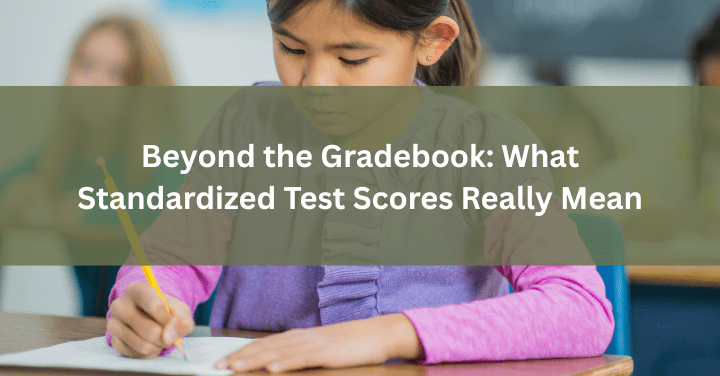For many parents, getting their child’s standardized test results—whether it’s EOGs, EOCs, MAP, or other assessments—can feel like opening a report card written in a foreign language. The numbers and labels might be confusing, and it’s hard to know what they truly reveal about your child’s abilities or needs.
Here’s the truth: test scores can be helpful, but they don’t tell the whole story. Let’s break it down so you can make informed, confident decisions about your child’s education.
1. What do These Assessments or “Standardized Tests” Actually Measure?
Standardized tests are designed to measure a student’s grasp of specific skills or content outlined by grade-level standards. For example:
- EOGs (End-of-Grade tests) in North Carolina assess whether students have mastered reading, math, and (in grades 5 & 8) science skills.
- EOCs (End-of-Course tests) are typically given in high school subjects like Math I, Biology, or English II.
- MAP (Measures of Academic Progress) is a nationally normed assessment that adjusts in difficulty to show not just whether a student is on grade level, but how they are growing over time.
These tests aim to measure knowledge and skills—but they don’t always reflect your child’s potential, effort, or even understanding in a real-world sense.
2. One Number, Lots of Factors
A child’s performance on a standardized test can be influenced by many things beyond their academic ability:
- Test anxiety
- Trouble focusing for long stretches
- Poor sleep, hunger, or illness on test day
- Language processing or learning differences
- Lack of familiarity with test-taking strategies
It’s important not to overreact to a low score—but also not to ignore patterns or persistent underperformance.
3. What is a “Good” Score, Really?
In North Carolina EOGs, a score of Level 3 or above typically means the student is meeting grade-level expectations. While a Level 3 is passing—it could also mean the student could use support to build confidence and depth.
In the MAP test, scores are given as RIT scores and percentiles. A child in the 30th percentile, for example, is performing better than 30% of peers—but 70% are ahead. That might be a red flag.
4. Is This a Cause for Concern?
Reach out for academic support if you notice:
- A sudden drop in performance compared to previous years
- Persistent difficulty in one subject (even if the grade is “passing”)
- Discrepancies between classroom performance and test scores
- Your child dreads tests or feels discouraged about learning
These may point to a gap in foundational skills, a learning difference, or simply a need for more personalized support.
5. As a Parent, What are my Options?
- Talk to your child’s teacher: Ask how the test scores align with what they see in class.
- Look for trends over time: One test is just a snapshot. But patterns across years tell a clearer story.
- Consider private, 1:1 academic coaching or tutoring: A high-quality, customized tutoring plan can close skill gaps, reduce anxiety, and build test-taking confidence.
At Thrive Tutoring, we pair families with highly credentialed educators who can help interpret scores, identify underlying challenges, and create a plan that moves your child forward.
The Bottom Line
Standardized tests are one piece of your child’s academic picture—not the whole puzzle. Used wisely, they can help you identify areas of strength, support, and growth. And when scores raise questions, you don’t have to navigate those questions alone.





